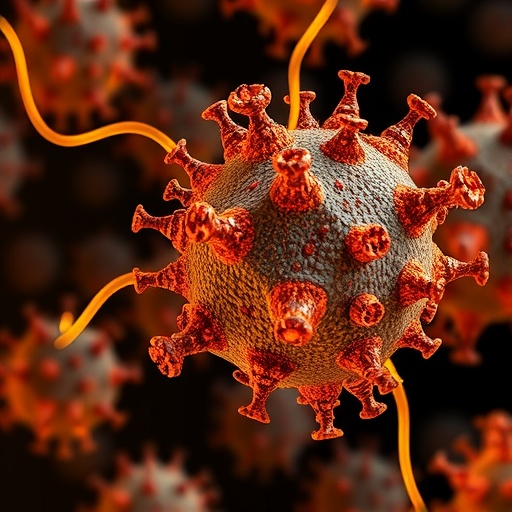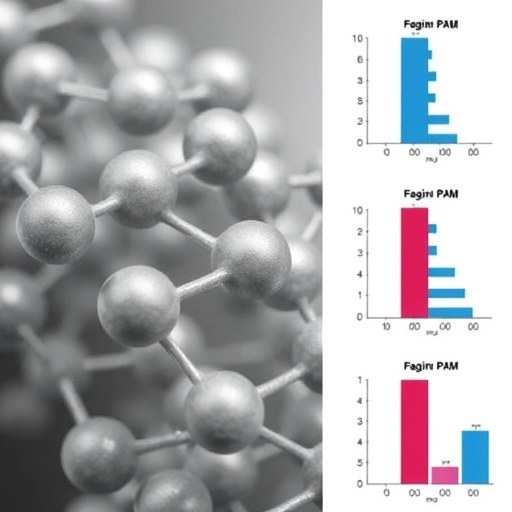
A groundbreaking study published in Nature unveils a novel strategy to exploit vulnerabilities in cancer cells defective in G1–S checkpoint control by using cyclin A/B RxL inhibitors. This multifaceted research elucidates how these inhibitors promote an unprecedented interaction between cyclin B and CDK2, redirecting cell cycle dynamics to induce lethal mitotic arrest. The findings deepen our understanding of cell cycle regulation and hint at promising therapeutic avenues for aggressive cancers.
The investigation commenced with an ambitious CRISPR–Cas9 base editor screen performed in NCI-H1048 lung cancer cells. This screen employed both A>G and C>T base editors targeting key genes involved in mitotic regulation—namely CCNB1 (cyclin B1), CCNA2 (cyclin A2), CDK2, and CDC20. The experimental design involved treating cells with the potent cyclin A/B RxL inhibitor CIRc-004 and its inactive enantiomer CIRc-005, allowing for a robust comparison of genetic dependencies and resistance mechanisms over a prolonged period.
Intriguingly, base editor-induced mutations that conferred resistance to CIRc-004 clustered within the CCNB1 gene, specifically at residues 169–177. This region corresponds to the canonical cyclin B–CDK1 binding interface, as predicted by AlphaFold models. Mutations such as Glu169Lys, Tyr170His, and Tyr177Cys were validated via amplicon deep sequencing, confirming their enrichment in CIRc-004-treated populations. These mutations likely disrupt cyclin B’s interaction with CDK1, providing a genetic barrier to drug efficacy.
.adsslot_sny5SYupVx{width:728px !important;height:90px !important;}
@media(max-width:1199px){ .adsslot_sny5SYupVx{width:468px !important;height:60px !important;}
}
@media(max-width:767px){ .adsslot_sny5SYupVx{width:320px !important;height:50px !important;}
}
ADVERTISEMENT
Further biophysical analysis revealed that CIRc-004’s mechanism extends beyond known cyclin B–CDK1 interactions. Cyclin B immunoprecipitation followed by mass spectrometry demonstrated a striking increase in CDK2 association upon CIRc-004 treatment, an interaction previously considered negligible under physiological conditions. This aberrant cyclin B–CDK2 complex formation reconfigures the cell cycle regulatory landscape, diverting CDK2 activity into mitosis in a manner that precipitates the spindle assembly checkpoint (SAC) activation.
Immunoprecipitation experiments across multiple cell lines, including NCI-H1048, NCI-H446, and RPE1, consistently showed enhanced cyclin B–CDK2 binding post-CIRc-004 treatment, while the cyclin B–CDK1 interaction remained largely unaffected. Parallel assays with a cyclin B triple mutant containing the resistance-conferring substitutions revealed that these mutations abrogate the aberrant cyclin B–CDK2 interaction, underscoring the specificity of the drug-induced complex.
Beyond protein–protein interactions, pharmacological inhibition and genetic depletion studies provided functional insights into the role of CDK2 in this context. CDK2 inhibition or knockout partly rescued cells from SAC induction and subsequent mitotic cell death triggered by CIRc-004. This finding highlights the pivotal contribution of cyclin B–CDK2 activity to the drug’s cytotoxic mechanism, a departure from the canonical paradigm where CDK2’s primary role is in G1–S progression.
Mechanistically, the study identified STMN1 (stathmin), a microtubule destabilizer and RxL-independent CDK substrate, as a downstream effector of cyclin B–CDK2 activity. CIRc-004 treatment led to increased phosphorylation of stathmin at mitotic stages, dependent on CDK2 but not CDK1 activity. Phosphorylated stathmin inhibits microtubule depolymerization, stabilizing the mitotic spindle and perpetuating SAC activation, culminating in prolonged mitotic arrest and cell death.
The complex interplay through which cyclin A/B RxL inhibitors redirect CDK2 to form previously uncharacterized cyclin B–CDK2 complexes sheds light on vulnerabilities unique to cancer cells harboring dysregulated G1–S checkpoints. By forcing CDK2 into an aberrant mitotic role, CIRc-004 triggers a lethal mitotic checkpoint response. This mechanism offers a precision targeting strategy for cancers that rely heavily on CDK2 for unchecked proliferation due to compromised upstream control.
Mutational analyses illuminated how disrupting key residues in the cyclin B hydrophobic patch inflicted resistance to CIRc-004 by halting cyclin B–CDK2 complex formation. This evidence strongly supports on-target activity of the inhibitor and validates the functional importance of the identified protein–protein interfaces for drug efficacy. Moreover, the mutation-induced resistance highlights potential resistance mechanisms that could emerge in clinical applications, guiding future development of second-generation inhibitors.
At a broader level, this research underscores the evolving paradigm wherein cell cycle regulatory kinases can be redirected between partners under pharmacological pressure, challenging established notions of strict cyclin–CDK specificity. Cyclin B’s promiscuous binding to CDK2 upon CIRc-004 treatment exemplifies how therapeutic agents can rewire protein interaction networks to reveal latent vulnerabilities.
Complementing the genetic and proteomic data, functional assays demonstrated that co-treatment with CDK2-specific inhibitors effectively abrogated CIRc-004-induced SAC activation. These results not only validate CDK2’s requirement for the mitotic arrest but also hint at combinatorial treatment strategies wherein CDK2 activity modulation could fine-tune therapeutic windows or overcome resistance phenomena.
In sum, this compelling study offers a comprehensive molecular dissection of how cyclin A/B RxL inhibitors induce synthetic lethality in checkpoint-compromised cancers by inducing ectopic cyclin B–CDK2 complexes that hyperactivate the SAC, forcing mitotic catastrophe. These insights reveal a promising new avenue to exploit the vulnerabilities of rapidly dividing cancer cells, holding substantial translational promise for future cancer therapies.
As cancer treatment increasingly shifts toward targeting specific cell cycle regulators, this work provides a timely and mechanistic framework for the development of potent, selective inhibitors that modulate cyclin–CDK interactions. By elucidating both the genetic determinants of drug response and the biochemical consequences of these interactions, the authors have paved the way for stratified therapeutic approaches aiming to overcome the resistance and heterogeneity typical of cancer cells.
Ultimately, this discovery adds a critical dimension to our understanding of cyclin–CDK biology, emphasizing the plasticity of these interactions and their exploitable nature in cancer therapeutics. The formation of novel cyclin B–CDK2 complexes as mediators of cell death not only challenges existing dogma but also inspires innovative drug discovery to curb the proliferation of aggressive malignancies.
Subject of Research: Targeting the cyclin A/B-CDK cell cycle machinery to induce mitotic cell death in G1–S checkpoint-compromised cancers using cyclin A/B RxL inhibitors.
Article Title: Targeting G1–S-checkpoint-compromised cancers with cyclin A/B RxL inhibitors.
Article References:
Singh, S., Gleason, C.E., Fang, M. et al. Targeting G1–S-checkpoint-compromised cancers with cyclin A/B RxL inhibitors. Nature (2025). https://doi.org/10.1038/s41586-025-09433-w
Image Credits: AI Generated
Tags: cell cycle regulation in oncologyCRISPR-Cas9 base editingcyclin A/B inhibitorscyclin B and CDK2 interactioncyclin B1 mutations and cancerG1-S checkpoint cancer targetinggenetic resistance mechanisms in cancermitotic arrest in cancerNCI-H1048 lung cancer studytargeted cancer therapiestherapeutic strategies for aggressive cancersunderstanding cancer vulnerabilities





